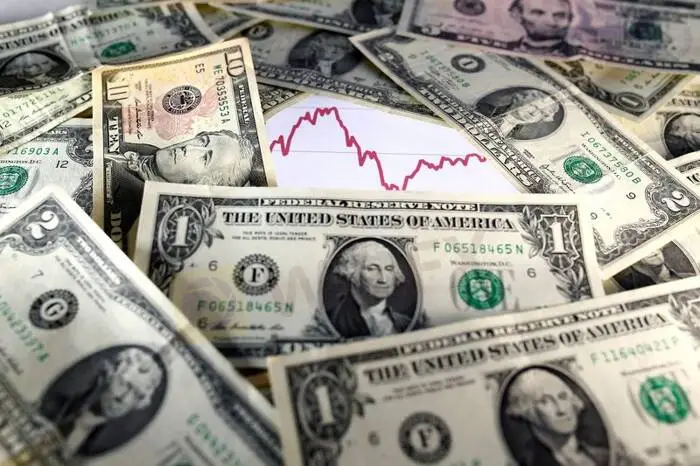简体中文
繁體中文
English
Pусский
日本語
ภาษาไทย
Tiếng Việt
Bahasa Indonesia
Español
हिन्दी
Filippiiniläinen
Français
Deutsch
Português
Türkçe
한국어
العربية
Dollar set for biggest weekly drop in nearly 4 months as rate bets cool
Abstract: The U.S. dollar sank to a one-month low versus major peers on Friday as traders lowered Federal Reserve rate hike expectations amid signs the central bank might slow or even pause its tightening cycle in the second half of the
The dollar was set for its biggest weekly drop in nearly four months as traders lowered Federal Reserve rate hike expectations amid signs the U.S. central bank might slow or even pause its tightening cycle in the second half of the year.

A broad-based decline in U.S. Treasury yields, weak economic data and cautious comments by some Fed policymakers including Atlanta Fed President Raphael Bostic this week have raised the prospect that the dollars gains premised on aggressive rate hikes may have halted for now.
“The market‘s tentative speculation about a pause in the Fed’s tightening cycle in September is surely contributing to keeping the dollar soft,” ING strategists said.
The dollar index, which measures the greenback against a basket of six peers, fell as low as 101.43 for the first time since April 25. On a weekly basis, it was down 1.3%, its biggest weekly drop since the first week of February.
It hit a nearly two-decade peak above 105 earlier this month but has retreated since then as economic data has weakened. A Citigroup economic surprise index for the United States has fallen to its lowest level since September 2021.
Minutes from the Feds May meeting this week showed most participants believed 50 basis-point hikes would be appropriate at the June and July policy meetings, but many thought big, early hikes would allow room to pause later in the year to assess the effects of that policy tightening.
The chief beneficiary of the dollars decline is the euro but that momentum has also stalled as investors believe a lot of the expected rate hikes from the European Central Bank is already baked into current levels.
Against the U.S. unit, the single currency rose to its highest levels in a month at $1.0765. Sterling was firm at $1.2666.
Better risk sentiment did not help bitcoin however, which slipped 1.62% to around $28,710, continuing this weeks gradual decline from the psychologically important $30,000 level.
The risk-sensitive Australian dollar rallied 0.6% to $0.7142, while the New Zealand dollar jumped 0.65% to $0.6520.
(Reporting by Saikat Chatterjee; additional reporting by Kevin Buckland in Tokyo; editing by Susan Fenton)
Disclaimer:
The views in this article only represent the author's personal views, and do not constitute investment advice on this platform. This platform does not guarantee the accuracy, completeness and timeliness of the information in the article, and will not be liable for any loss caused by the use of or reliance on the information in the article.
WikiFX Broker
Latest News
Geopolitical Events: What They Are & Their Impact?
Volkswagen agrees deal to avoid Germany plant closures
Top 10 Trading Indicators Every Forex Trader Should Know
TradingView Launches Liquidity Analysis Tool DEX Screener
MultiBank Group Wins Big at Traders Fair Hong Kong 2024
WikiEXPO Global Expert Interview: Simone Martin—— Exploring Financial Regulation Change
'Young investors make investment decisions impulsively to keep up with current trends' FCA Reveals
Why Do You Feel Scared During Trade Execution?
CySEC Settles Compliance Case with Fxview Operator Charlgate Ltd
Malaysian Influencer Detained in Taiwan Over Alleged Role in Fraud Scheme
Currency Calculator


